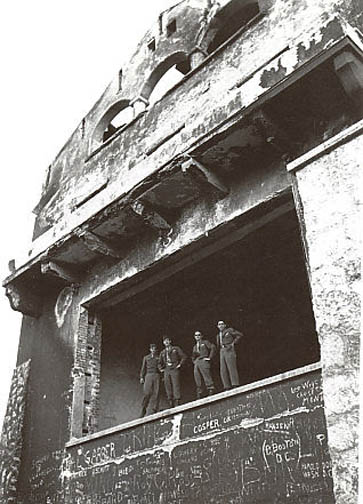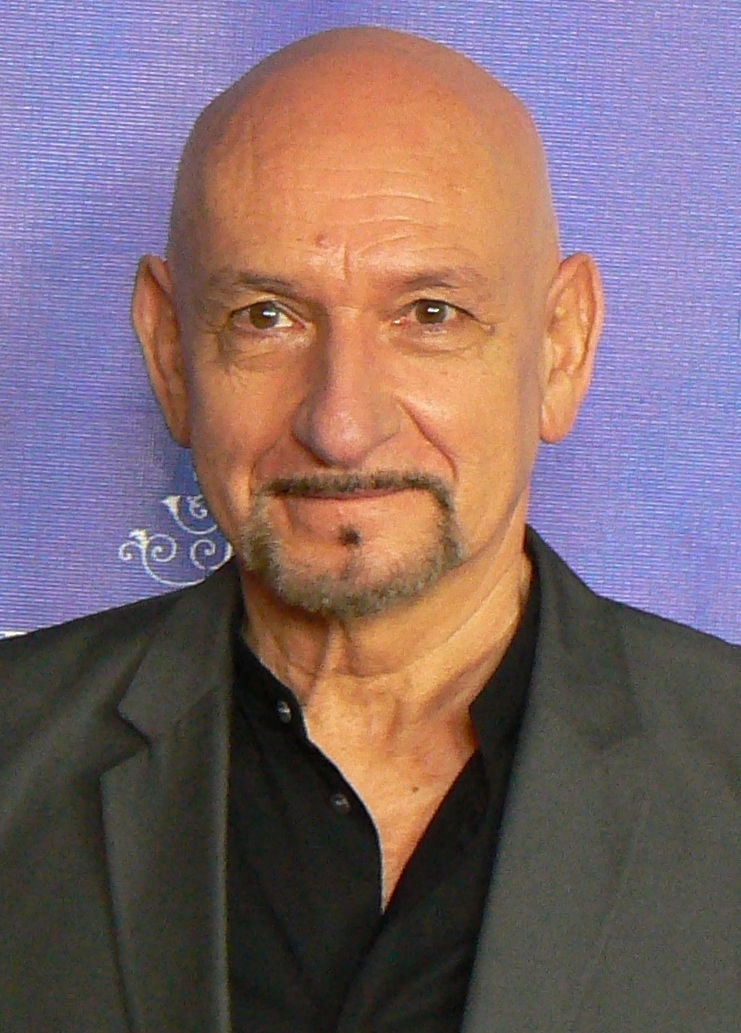Photos of the place where Schindler’s List was filmed

Courtyard in Kazimierz used for movie location
In 1993, when Stephen Spielberg made a movie out of a novel called “Schindler’s Ark,” written by Australian author Thomas Keneally, he needed an authentic Jewish quarter for the scenes depicting the Jewish ghetto of Podgorze in Krakow. He chose the Kazimierz district of Krakow because this area had not changed since the 1940s, while Podgorze had been partially rebuilt with modern buildings.
Schindler’s List tells the story of how Oskar Schindler, an ethnic German industrialist from the Sudetenland in what is now the Czech Republic, saved 1098 Jews from the misery of having to work at the Nazi forced labor camp at Plaszow, by employing them in his factory in the Zablocie district of Krakow.
Schindler’s factory became a sub-camp in the Nazi concentration camp system; the Jewish prisoners lived in barracks which Schindler built for them on the grounds of his factory.
Instead of paying wages to the Jews, Schindler paid less than normal wages to the WVHA (SS Economic Office in Oranienburg) for their labor. Although Schindler didn’t mistreat his Jewish workers, he did profit from their slave labor. Initially, he was motivated by the desire for money, not by a desire to save the Jews.
The photo above shows the balconies in the courtyard from where the suitcases were thrown down in the scene in Spielberg’s movie in which the Podgorze Ghetto is liquidated.
According to my tour guide, a courtyard such as this is typical of the way living space was traditionally arranged in the old Jewish quarters of Polish cities.
Since the fall of Communism in Poland in 1989, Kazimierz has been revived as a Jewish community, and it has also become a popular tourist attraction with special tours of the places where the movie was filmed.
In October 1998, I took a guided tour of Kazimierz and took some photographs of the places where Schindler’s List was filmed.
One of the most memorable passages in the novel Schindler’s List is the one where Mrs. Dresner hides under a stairwell when the Nazis come to round up the Jews in the Ghetto in June 1942, to take them to the Belzec extermination camp.
According to the book, after this roundup in which many of the Jews escaped, the Jewish Combat Organization (ZOB), a group of resistance fighters, bombed the Cyganeria Restaurant and killed 7 German SS soldiers. Next, the SS-only Bagatella Cinema was bombed in Krakow.
In the next few months the ZOB sank German patrol boats on the Vistula, fire-bombed German military garages in Krakow and derailed a German army train, besides forging papers and passports for Jews to pass as Aryans.
In the movie, the date of the scene where Mrs. Dresner hides has been changed to the day of the liquidation of the ghetto on March 13, 1943.
The photograph below shows the stairway used in the scene in which Mrs. Dresner hides from the Jewish police who were helping the Germans to round up the Jews for “transportation to the East,” a euphemism for taking them to the alleged gas chambers.

Stairs where Mrs. Dresner hid in the story of Schindler’s List
The guided tour that I took in 1998 was called “Schindler’s Steps”. From Krakow, the tour entered Kazimierz on Jozefa street and the first thing we saw was the courtyard, which links Jozefa street with Meiselsa street, and the stairwell where the hiding scene in Schindler’s List was filmed.
Mrs. Dresner hid under the stairwell, pictured above, after a neighbor allowed her daughter, but not her, to hide behind a false wall in an apartment. Mrs. Dresner was the aunt of Genia, the little girl in red, in the movie.
In the movie, the Nazis went through the Podgorze ghetto, room by room, and tore down walls as they looked for Jews who were hiding. While they are searching for Jews, a German soldier stops to play the piano. The Nazis loved classical music and this is a reference to the Jewish saying that the Nazis literally put down their violins in order to kill the Jews.
Germany was the most civilized and advanced country in the world in the 1930s, which makes it all the harder to understand how the Nazis could have planned the deliberate genocide of the Jews.
According to the novel, entitled “Schindler’s Ark,” around 4,000 Jews were found hiding in Podgorze during the liquidation of the ghetto and they were executed on the spot.
However, during the post war trial of Amon Goeth, the Commandant of the Plazow camp, the charges against him mentioned that 2,000 Jews were killed during the liquidation of the Podgorze ghetto.
The Jews who managed to escape from the ghetto joined the partisans of the Polish People’s Army, who were hiding in the forests of Niepolomice. Unlike the novel, the movie “Schindler’s List” does not mention the heroic Jewish resistance fighters, who managed to escape from the Nazis, and lived to fight as partisans throughout the war.
The Schindler’s Steps guided tour, which I took in October 1998, started in Krakow with Schindler’s modern apartment building at #7 Straszewskiego Street. From there, Schindler could look out his third floor windows and see the Planty, a narrow park all the way around Old Town Krakow which marks the area where the town walls once stood.
This apartment, in a very ordinary, ugly gray building, was given to Schindler by the Nazis after it was taken, without compensation, from the Jewish Nussbaum family.
Straszewskiego Street ends at Wawel, the limestone hill where the ancient royal palaces still stand. During the German occupation of Poland, Hans Frank, the governor of occupied Poland, which was called “the General Government,” lived on Wawel hill in the Castle originally built by King Kazimierz the Great, the founder of the separate city of Kazimierz. Schindler’s apartment in Krakow was north of the Kazimierz district and north of Wawel hill.

Street in Kazimierz before the Germans came
The next stop, on the tour that I took, was Schindler’s Enameled Pots and Pans Factory, on the south side of the river Vistula, at #4 Lipowa Street. Lipowa Street goes through Podgorze, and the factory is just east of the former ghetto and across the railroad tracks.
Enamelware was apparently widely used in Poland instead of pottery or china, judging by the large amounts of enameled dishes, that were brought to the concentration camps by the prisoners. It is now on display in the museums at Auschwitz and Majdanek.
Enamelware is the type of dishes that Americans associate with the Old West when cowboys ate the beans that they cooked over the campfire on metal plates coated with mottled gray enamel. The most popular color of enameled bowls, displayed in the museums in Poland, is a dull brick red. Enameled pots and pans, such as Schindler produced in his factory, were also popular in American kitchens up until the 1960s.

Oskar Schindler
Schindler obtained a contract with the Germans to supply mess kits and field kitchen pots to the German army. Schindler’s Krakow factory produced armaments as well as enamelware. The Enamelware part of the factory remained open until 1945 with 300 Polish non-Jewish workers.
When the Plaszow camp closed, Schindler moved the munitions part of his factory to Brünnlitz in what is now the Czech Republic.
The factory produced 45 mm anti-tank shells, but none of his shells were ever used because Schindler deliberately set his machines so that the calibration was incorrect, according to the movie “Schindler’s List.” Other sources claim that Schindler spent all the money that he made on his enamelware business to purchase shells on the black market which he then sold to the Nazis. By that time, his purpose was not to make money, but to save his Jewish workers, and thereby save himself from being indicted as a war criminal.
Thomas Keneally, the author of the novel “Schindler’s Ark,” who is a native of Australia, mentioned in the book that in 1944, an Australian plane was shot down by the Germans over Schindler’s factory; the plane was not trying to bomb his munitions factory, but was dropping supplies to the Jewish and Polish partisans in the forest east of Krakow, according to the author.
Schindler’s factory building was still being used for an electronics factory when I visited Krakow in 1998 and I only saw it from the street. The factory is an ordinary gray stucco three-story building with lots of windows, built right next to the sidewalk.
The architectural style of the building is what Americans would call Art Deco; in Poland in the 1940s, this style was called Modern. There is an iron gate at the entrance to the factory courtyard where Schindler built barracks for his workers.
The factory was named Deutsche Emailwaren Fabrick (German Enamelware Factory) and was called DEF for short.

Jewish workers at Schindler’s factory
Oscar Schindler’s factory was taken over by the Jewish Council in Krakow and the building then had a sign outside, just like the original sign, which says “Deutsche Emalia Fabrika – Oscar Schindler.” The factory is now included on the Schindler’s Steps tour; visitors can see the stairs that were used in the filming of the movie.
Schindler’s original office is at the top of the stairs and visitors may sit at his desk. The rest of the factory is off limits but visitors can look around the grounds. The factory interior was not used in the film, except for the stairs.
The photos below were contributed by Richard Stephenson, who took the Schindler’s Steps tour in December 2005.
The grounds of Oskar Schindler’s Factory in Krakow
Photo Credit: Richard Stephenson

Stairs in the factory were shown in Schindler’s List
Photo Credit: Richard Stephenson
Oskar Schindler’s real office was not shown in Schindler’s List
Photo Credit: Richard Stephenson
On my visit to Poland in 1998, I stayed at the Hotel Cracovia in Krakow which was owned by Orbis Travel Agency, the tour company that I used. Built in 1965, it was a first class, but inexpensive, hotel where tour groups from all over Europe stayed before visiting such places as Auschwitz, which is due west of Krakow.
Tours of Kazimierz and the site of the Plaszow labor camp can be arranged from the hotel, as well as private tours of the Auschwitz concentration camp.







